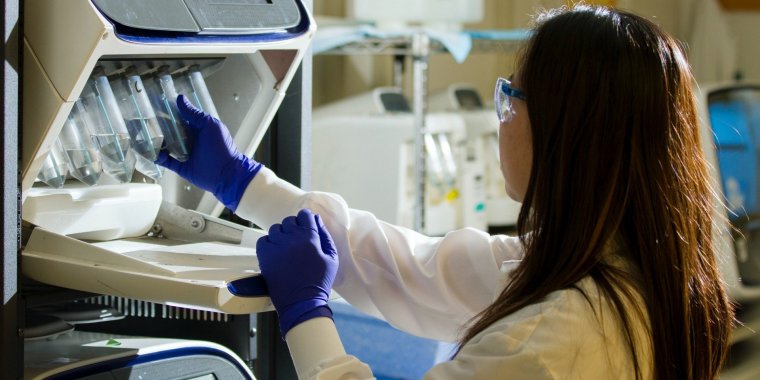| Health / Health News |
Researchers identify gene in mice that controls food cravings, desire to exercise
National Institutes of Health researchers have discovered a gene in mice that controls the craving for fatty and sugary foods and the desire to exercise.

Researchers identify gene in mice that controls food cravings, desire to exercise. Photo: National Cancer Institute/Unsplash
The gene, Prkar2a, is highly expressed in the habenula, a tiny brain region involved in responses to pain, stress, anxiety, sleep and reward.
The findings could inform future research to prevent obesity and its accompanying risks for cardiovascular disease and diabetes.
The study was conducted by Edra London, Ph.D., a staff scientist in the section on endocrinology and genetics at NIH’s Eunice Kennedy Shriver National Institute of Child Health and Human Development (NICHD), and colleagues.
Prkar2a contains the information needed to make two subunits — molecular components — of the enzyme protein kinase A. Enzymes speed up chemical reactions, either helping to combine smaller molecules into larger molecules, or to break down larger molecules into smaller ones.
Protein kinase A is the central enzyme that speeds reactions inside cells in many species. In a previous study, the NICHD team found that despite being fed a high fat diet, mice lacking functioning copies of Prkar2a were less likely to become obese than wild type mice with normally functioning Prkar2a.
The researchers determined that Prkar2a-negative mice ate less high-fat food than their counterparts, not only when given unlimited access to the food, but also after a fast. Similarly, the Prkar2a negative mice also drank less of a sugar solution than the wild type mice.
The Prkar2a-negative mice were also more inclined to exercise, running 2-3 times longer than wild type mice on a treadmill.
Female Prkar2a-negative mice were less inclined to consume high fat foods than Prkar2-negative males, while Prkar2-negative males showed less preference for the sugar solution than Prkar2-negative females. (National Institutes of Health)
YOU MAY ALSO LIKE





